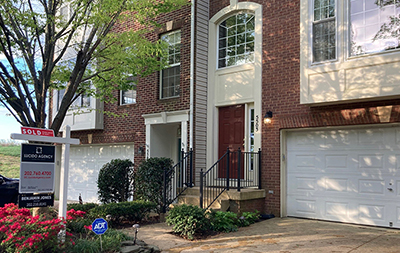
Existing Home Sales Drop 10th Straight Month

Existing home sales declined in November, the 10th straight monthly decline, the National Association of Realtors reported Wednesday. All four U.S. regions recorded month-over-month and year-over-year declines.
The report said total existing home sales (https://www.nar.realtor/existing-home-sales fell by 7.7% from October to a seasonally adjusted annual rate of 4.09 million in November. Year-over-year, sales dwindled by 35.4%.
Single-family home sales declined to a seasonally adjusted annual rate of 3.65 million in November, down 7.6% from 3.95 million in October and 35.2% from one year ago. The median existing single-family home price rose to $376,700 in November, up 3.2% from November 2021. Existing condominium and co-op sales fell to a seasonally adjusted annual rate of 440,000 units in November, down 8.3% from October and 37.1% from the previous year. The median existing condo price rose to $321,600 in November, an annual increase of 5.8%.
Regionally, the news wasn’t any better. Sales in the Northeast decreased by 7.0% from October to an annual rate of 530,000 in November and fell by 28.4% from a year ago. The median price in the Northeast rose to $394,700, an increase of 3.5% from the prior year. Sales in the Midwest fell by 5.6% from October to an annual rate of 1.02 million in November and fell by 30.6% from one year ago. The median price in the Midwest was $268,600, up 3.9% from a year ago.
In the South, sales fell by 7.1% in November from October to an annual rate of 1.84 million and by 35.0% from a year ago. The median price in the South rose to $340,100, an increase of 4.4% from this time last year. Sales in the West fell by 12.5% from October to an annual rate of 700,000 in November and dropped by 45.7% from one year ago. The median price in the West rose to $569,800, a 2.0% increase from November 2021.
“The housing market correction continued in November,” said Charlie Dougherty, Senior Economist with Wells Fargo Economics, Charlotte, N.C. “The ongoing weakness in existing home sales is explained by reduced affordability due to 2022’s sharp rise in mortgage rates on top of the fast run up in home prices over the past two years.”
Dougherty noted prices are declining outright on a monthly, not-seasonally adjusted basis. “Prices tend to fall in the winter months as buyers pull back in wait of the spring,” he said. “The recent monthly declines in home values, however, are likely better explained by sellers adjusting prices lower in response to a considerably weaker demand environment brought on by the leg-up in mortgage rates.”
However, Dougherty also said despite a dearth of supply, the combination of moderating prices and lower financing costs appears to be enticing some buyers back into the market. “These positive developments come as welcome news and follows our general expectation for mortgage rates to gradually descend over the course of the next two years,” he said. “Lower mortgage rates may very well improve affordability and help stabilize buyer demand in the near-term, but a challenging macroeconomic backdrop for the housing market awaits in 2023.”
“In essence, the residential real estate market was frozen in November, resembling the sales activity seen during the COVID-19 economic lockdowns in 2020,” said NAR Chief Economist Lawrence Yun. “The principal factor was the rapid increase in mortgage rates, which hurt housing affordability and reduced incentives for homeowners to list their homes. Plus, available housing inventory remains near historic lows.”
The report said total housing inventory at the end of November fell to 1.14 million units, down 6.6% from October, but up 2.7% from one year ago (1.11 million). Unsold inventory sits at a 3.3-month supply at the current sales pace, unchanged from October, but up from 2.1 months in November 2021.
The median existing home price for all housing types in November rose to $370,700, an increase of 3.5% from a year ago ($358,200), as prices rose in all regions. This marks 129 consecutive months of year-over-year increases, the longest-running streak on record.
NAR said properties typically remained on the market for 24 days in November, up from 21 days in October and 18 days in November 2021. Sixty-one percent of homes sold in November 2022 were on the market for less than a month. First-time buyers were responsible for 28% of sales in November, unchanged from October, but up from 26% in November 2021. All-cash sales accounted for 26% of transactions in November – unchanged from October and up from 24% in November 2021.
Individual investors or second-home buyers purchased 14% of homes in November, down from 16% in October and 15% in November 2021. Distressed represented 2% of sales in November, unchanged from last month and one year ago.
